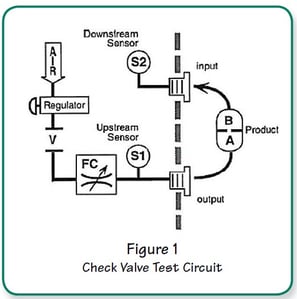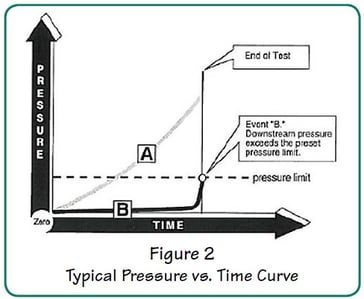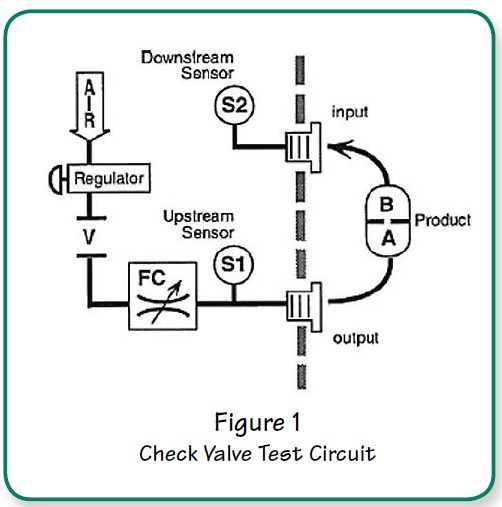Pressure Booster Accessory
Uson pressure booster offers a safe, quiet and cost-effective alternative to renting gas bottles or buying a clean, high-pressure, motor-driven...
Products such as one-way valves are often designed to open at a certain pressure. Production and test engineers need to know at precisely what pressure the valve starts to open (cracking pressure point). Normal burst testers do not detect the pressure change when the valve starts to open because the cracking pressure is so small.
Most leak testers cannot determine the cracking pressure because they use merely one pressure sensor upstream from the product being tested. The upstream sensor is constantly supplied with air, so sensing the downstream pressure change is next to impossible.
The Sprint iQ check valve tester is equipped with a flow control and an additional transducer called a downstream sensor. The downstream sensor can be either a pressure or mass flow transducer. All components are contained in Sprint iQ’s same small enclosure. The downstream sensor (pressure or mass flow) detects precisely when the product opens and begins to disperse air.
The change in pressure or flow tells engineers how the device being tested operated in real application. The downstream sensor option can be applied to many Sprint iQ test machines.
The Sprint iQ check valve tester works like this (Figure 1):

Pressure slowly ramps up through the fl ow control and pressurizes the upstream side of the product. Curve [A]. During the gradual pressure increase, the pressure measured on the downstream side of the product remains near zero. Curve [B]. Sprint iQ’s downstream sensor looks for the slightest pressure above zero at the B-side of the product. When the pressure exceeds the preset pressure limit (dashed line), the EVENT is detected, and the tester stops the test. If the downstream sensor does not detect an event (pressure exceeding the pressure limit within the established test time), the program times out and Sprint iQ shows NO CRACK in the status box on the LCD display.

Uson pressure booster offers a safe, quiet and cost-effective alternative to renting gas bottles or buying a clean, high-pressure, motor-driven...
Test the integrity of the cylinder head water jacket for porosity, while simultaneously testing each oil drain-back hole for casting blockage.
The fast-fill option allows large products to reach test pressure much faster than would be possible using the standard test pressure for inflation.
Industries
